#philosophy of science
Text

#science#women in stem#academia#stem#stemblr#space science#physics#astrophysics#astronomy#quantum mechanics#general relativity#cognitive science#psychology#neuroscience#cognitive neuroscience#philosophy of science#stem romanticism#stem memes#physics memes#science memes#neuroscience memes
191 notes
·
View notes
Text

diamonds are forever
#artists on tumblr#photography#astrophotography#astronomy#astro observations#astro community#astrophysics#astronomical observation#astronomical objects#astronomers#cosmos#cosmology#universe#outer space#galaxy#cosmic poetry#mysteries of the universe#science#philosophy of science
71 notes
·
View notes
Text
Book Review: The Case Against Reality
Nima Arkani-Hamed shows up surprisingly rarely in popular science books. A major figure in my former field, Nima is extremely quotable (frequent examples include “spacetime is doomed” and “the universe is not a crappy metal”), but those quotes don’t seem to quite have reached the popular physics mainstream. He’s been interviewed in books by physicists, and has a major role in one popular physics…
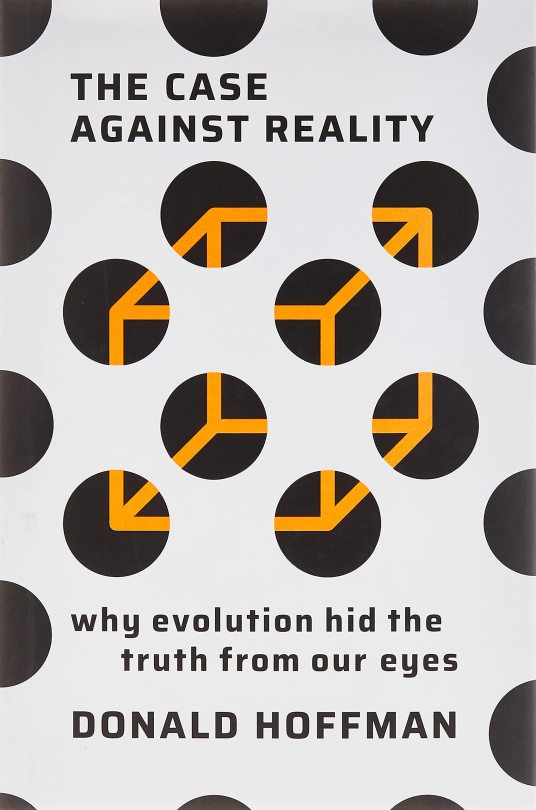
View On WordPress
#book review#particle physics#philosophy of science#psychology#quantum field theory#quantum mechanics#relativity#string theory
40 notes
·
View notes
Photo


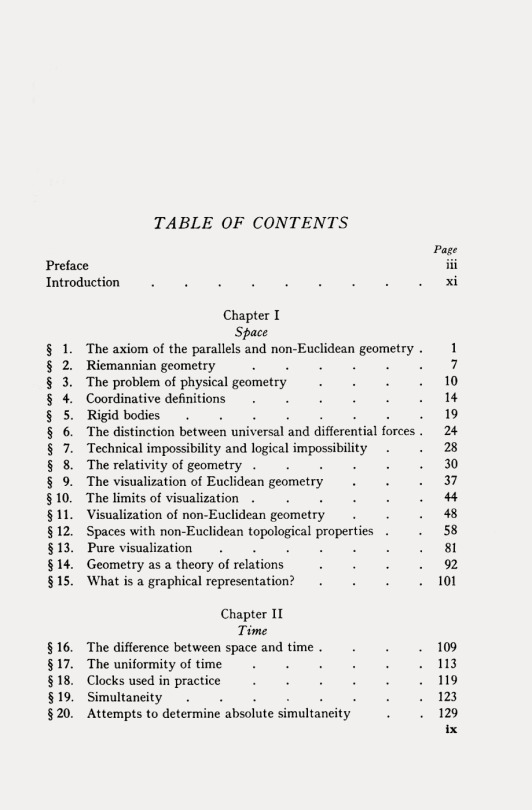

Hans Reichenbach, (1928), The Philosophy of Space & Time, Translated by Maria Reichenbach and John Freund, with introductory remarks by Rudolf Carnap, Dover Publications, New York, NY, 1958. Cover designed by Menten Inc.
#graphic design#philosophy#philosophy of science#epistemology#book#cover#book cover#hans reichenbach#maria reichenbach#john freund#rudolf carnap#dover publications#menten inc.#1920s#1950s
99 notes
·
View notes
Text




16/10/2023 | Day 2 of 100 days of productivity
Today I got a paper back and despite the good grade, I’m really bummed out because I expected a little more. Regardless, I finished an essay I had due tomorrow, read a little of my current read, and meal prepped for the rest of the week! It was a really decent day 🩷
#academia#chaotic academia#chaotic academic aesthetic#dark academia#philosophy#bookblr#university#studyblr#philosophy of science#history#100 days of studying#100 days of productivity#100 days challenge#MA student#student#study motivation#studyspo#study blog#studybrl
42 notes
·
View notes
Text
How to Use Quantum Computing as a Tool for Philosophy of Science
Recently, I attended the MCQST 2023 Conference on which Lídia del Rio presented the research with her collaborators about quantum thought experiments in a quantum computer. They wrote a whole package to do this and describe the ideas in detail in [1]. It's definitely worth checking out the paper and the package - to make you curious let us look at an illustrative example [1, p.4-10].
Example Setting

Let us consider the following setting (as depicted in the image above): Alice has some two-level quantum system R (e.g. a qubit) in the state written in blue. Thus, the probability of obtaining a=0 in a measurement is 1/3 while the result a=1 will be obtained with a probability 2/3. Depending on the outcome, Bob receives the a system in state |0> (if Alice's result was a=0) or in state |+> ~ |0>+|1> (if Alice's result was a=1). In turn, Bob measures his system in the computational basis and can receive the outcome b=0 or b=1. What conclusions can Bob draw about Alice's measurement outcomes based on his? It is assumed that Bob knows the rules upon which Alice sends him the different systems. Thus, if his outcome is b=0 he cannot make any retrodiction since the outcome b=0 could stem from both possible states |0> and |+>. However, if he measures b=1 he knows that his state must have been in |+> and thus he can retrodict that Alice's outcome must have been a=1. Therefore, in one of both cases Bob can draw a deterministic conclusion about Alice's outcome.
So far so good, at this point I'd like to mention that even though this setup seems to be motivated by the Frauchiger-Renner Thought Experiment, we will not talk about apparent paradoxes or fundamental questions in foundations of quantum mechanics themselves. Instead the setting is supposed to be easy to grasp and can therefore neatly serve the purpose to illustrate how a thought experiment can be formalized in terms of quantum circuits. Hence, we will discuss a tool which can be used for quantum thought experiments in general by using a simple example.
Alice's and Bob's Brains in a Quantum Circuit

Next, we will translate this specific setting as a quantum circuit - by going through the above illustration of the resulting circuit. The first qubit is initialized in the state of Alice's system R. Even though this seems to be the only true quantum system at hand, we will act as if there was an external observer who looks at both Alice and Bob and their respective systems. Imagine you are in the position of this external observer and set the Heisenberg cut at this point: You are classical while both Alice and Bob are quantum (as it is done in Neo-Copenhagen interpretations). Then, one also has to model the "brains"/"memory" of both Alice and Bob. We start with Alice first: we assign a wire of the circuit to Alice's reasoning which basically means that somehow the possible measurement results are stored in this respective qubit. The wire representing her memory is initialized in state |0> and is connected to her system R via a CNOT gate. This means that if the system R was in state |0>, the qubit representing Alices would stay in |0>. However, if R was in |1>, Alice's state of memory would be in |1> as well. This way, one can model different measurement outcomes and also Alice's memory in a unitary manner without explicitly including measurements in the circuits yet. This is necessary since from our external perspective everything about Bob and Alice is considered to be quantum, i.e. must be modelled unitarily. Now, we can look at the third wire: It is again initialized in state |0> and remains in this state if Alice's memory is in state |0>. However, the controlled Hadamard will act on the third wire if Alice's memory is in state |1>, hence it would be turned into state |+>. Thus the controlled Hadamard models the system S which Bob receives - conditioned on Alice's measurement outcome of R. Finally, the last wire is again initialized in |0> and is supposed to model Bob's memory. Exactly as Alice's memory, also the relation between Bob's memory and his system S is modeled via a CNOT gate.
As a result we now have a quantum circuit which represents the setup from above from an external perspective. I think already at this point one can see the beauty of this approach - while one needs quite a lot of sentences to explain the simple setup, it can very easily be grasped by the neat quantum circuit. What is left to do now is to model Bob's reasoning regarding his retrodiction on Alice's outcome. We found that Bob can draw a deterministic conclusion about Alice's measurement outcome if his outcome is b=1, in the other case he cannot draw such a conclusion. How can this be mapped into a quantum circuit?
Modelling Bob's reasoning
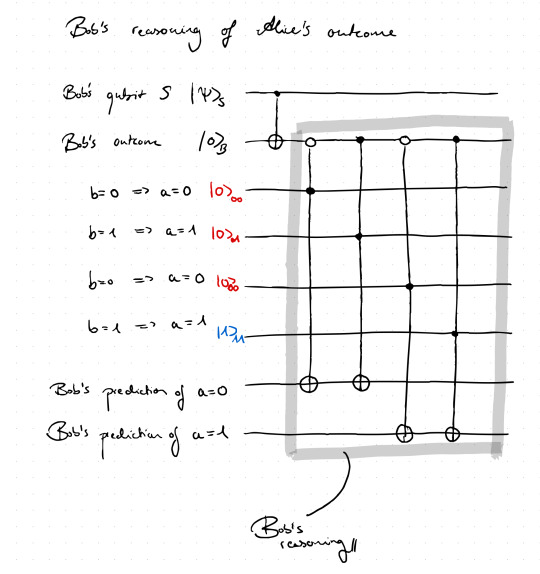
In the above circuit we added a couple of additional wires. One set represents the four possible logical inferences in this case, and the last two wires will show what Bob's prediction will be based on the initialized inferences. Let's go through this step by step:
There are four possible inferences on the measurement outcomes a and b, but only one of them is assumed to hold, namely (b = 1 -> a=1), which is why only the wire corresponding to this inference is initialized in state |1>. The other three inferences, which are assumed not to hold, are initialized in |0> and since there are control nodes from the nonlocal Toffoli-type on those wires, they will not really contribute as long as one does not change the initialization. Those Toffoli-type gates have two control nodes each as well as a NOT at the lower end. One control node is placed on Bob's memory qubit, acting dependently on the outcome b and represents the antecedent of each possible inference. If the inference of a wire assumes b=1 the corresponding Toffoli node on Bob's memory will be black, while it will be white for b=0. The second control node of each Toffoli gate is black in order to be activated according to which inference is initialized with state |1>. The consequent of those inferences is modeled by the lowest two wires. The NOT of each Toffoli is placed on the corresponding wires representing the consequent. Looking at the Toffoli for the inference b=1 -> a=1, one can see that if Bob's memory is in |1> and simultaneously the wire of the corresponding inference is initialized as |1> as well, the NOT on the lowest wire will turn the respective state to |1> (the prediction wires are initialized in |0>). Thus, Bob's prediction can be read off by the states of the prediction wires. Finally, one can also run this circuit and check its consistency - how?
Consistency Checks

In the above image we have put together all we got so far: Alice's actions from before, as well as bob's actions and his reasoning as discussed right above. The consistency of such a model can be checked by measuring the prediction wires as well as Alice's memory qubit. In this case, the only deterministic inference will show itself if Bob's prediction wire for a=1 will be |1> and this will coincide with Alice's memory being in |1>. For the other case, no inference can be done. This way one can check the consistency of the model and if the results show paradoxical outcomes one knows that something went wrong, that something in the logical reasoning / adopted interpretation of quantum theory is getting problematic. Having everything formalized as a quantum circuit will make the analysis of the issues easier.
Final Remarks
It appears to me that Quantum Circuits are not used here because one expects some computational advantage by running them on a Quantum Computer - instead they are used to neatly formalize subsystems and possible inferences of thought experiments. This way, thought experiments can be made more clear and transparent as well as it is easier to see the problem if the outcomes are not consistent. Therefore, their work shows that quantum circuits have a much broader field of application - it is not only about striving for some kind of quantum advantage for specific decision problems, instead they can also be used to formalize concepts in foundations of quantum mechanics; and this is something I have never thought about before, which is why I am so fascinated by the idea.
---
References:
[1] Nurgalieva, Mathis, del Rio, Renner - Thought experiments in a quantum computer. arXiv:2209.06236
#physics#mysteriousquantumphysics#quantum physics#studyblr#physicsblr#science#education#quantum#philosophy of science#philosophy#quantum computing
99 notes
·
View notes
Text
Daniel Dennett (1942 - 2024)
Many of us today woke up to a world that felt a little less vibrant, a little less intellectually stimulating. Daniel Dennett, a philosopher who revolutionized our understanding of the mind, science, and consciousness, passed away yesterday.
Daniel Dennett, image taken from Wikipedia
For me, Dennett was a guiding light in his study field. His work, particularly his early books “Content and…
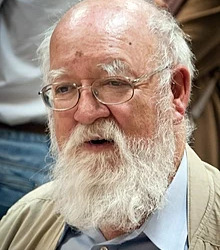
View On WordPress
#academia#Artificial Intelligence#biology#cognitive science#computationalism#consciousness#cultural commentator#Daniel Dennett#Darwin#free will#mental processes#Mind#multiple drafts model#naturalistic approach#nature of reality#philosopher#Philosophy#philosophy of mind#philosophy of science#Raffaello Palandri#science#wisdom
11 notes
·
View notes
Text
Exposing Scientific Dogmas: Rupert Sheldrake's Banned TED Talk
The talk was reshared again in a video by the YouTube channel "After Skool." It was based on his book The Science Delusion.
Here are the 10 Scientific Dogmas he listed (which could prevent science from greater discoveries and true scientific thinking since they create the default worldview of people worldwide):
#1 Nature is mechanical
#2 Matter is unconscious
#3 The laws of nature are fixed
#4 The total amount of matter and energy is always the same
#5 Nature is purposeless
#6 Biological hereditary is material
#7 Memories are stored inside your brain as material traces
#8 Your mind is inside your head
#9 Psychic phenomena like telepathy are impossible
#10 Mechanistic medicine is the only kind that really works
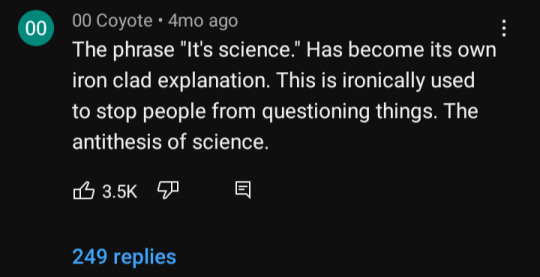
#txt#exposing scientific dogmas#rupert sheldrake#scientific materialism#materialism#science#mindful consumption#mindful living#mindfulness#mindsets#dogma#paradigms#worldviews#philosophy of science#unlearning#laws of nature#autodidact#food for thought#groupthink#thought experiment#genetics#sidewalkchemistry
54 notes
·
View notes
Text
8:00 wake up
8:10 take a shit
8:20 discuss the merits of an empiricist vs a positivist framework of a theory of knowledge
12:00 exit toilet
8 notes
·
View notes
Text
LJS 453 is a collection of 13th- and 14th-century Hebrew translations of 12th-century commentaries by Averroës on scientific works attributed to Aristotle, copied in Germany in 1446.
Online:
#medieval#hebrew#philosophy#aristotle#germany#12th century#13th century#14th century#15th century#science#history of science#philosophy of science#book history#rare books
64 notes
·
View notes
Note
How do paleontologists distinguish different species when even today similar species live close together, especially factoring in sexual dimorphism and other variables?
HAHAHAHAHAHAHAHAHAHAHAH
we use the morphological species concept knowing full fucking well it's limited but like what else do we have?
Good news though!
Species aren't real anyway!
Even on the neontological level, there is no way to consistently define them
They are an artificial box we are placing on life in order to communicate about it more effectively and study it in ways we can statistically analyze effectively
That doesn't make them real
55 notes
·
View notes
Text
Reading the introduction to von Neumann's Games and Economic Behavior. He's very in touch with the poverty of the state of economics, the huge challenges involved, and the need to focus on making a difference where differences can be made.
His portrait of how physics and mathematics coevolved is crisp and beautifully motivates how difficult applying the mathematical tools of the day to social problems is. I think he's after something like the Asimovian dream of psychohistory—of actually being able to predict human behavior on generational timescales and engineer societies based on those predictions. That same dream has drawn cybernetics nerds into econ for generations.¹
One thing that stands out: he smacks down so many criticisms of microeconomics still bandied around today. He does it very well, moving fluidly from one point to another, always hemming the opposition in. I'm happy, because he puts these arguments in such wonderful context. I'm sad, because people still make them now and don't seem to overcome his responses when they do so.
"Why does econ focus on these toy problems?" Because they're tractable and let us compare theory with both observation and intuition, which is unskippable foundation-laying (compare probability theory, which was first used to characterize obvious problems before we got things like Buffon's needle).
"Why doesn't sprinkling math on economics work?" Well, applying calculus works when doing marginal analysis, but most of the time, we mostly don't know what's happening. There's often no setup—no ansatz—we can do to gain new insight. When economists do this, they're often just putting fancy mathematical clothes on their verbal arguments, not discovering anything new. And calculus itself emerged from the need to solve kinematics problems in physics, and the kinds of problems we want to understand in economics often seem pretty different from this. Von Neumann really hopes that we'll discover new kinds of math to better understand economics, and Games is meant as a step in that direction.
"Why bother with math at all? Trying to reduce humans to a bunch of numbers is foolish!" Well, we can observe humans exhibiting preferences and making choices, which immediately suggests there's quantitative data (ordinal utilities) we can work with. And studying the impact of ordinal utilities at the margin using calculus is no more problematic, von Neumann argues, than studying clumps of atoms and other indivisible quanta as continuous bodies.
"Why don't we try to understand more important and complicated systems, like the US economy?" Because the system is complex and the data is pitifully sparse for that complexity²—and there's nothing to be gleamed from very complex data that we cannot theorize about. "Observation is theory-laden" isn't language von Neumann had, but he seems to be reaching for this idea. Von Neumann even does a David Deutsch-esque maneuver of saying, "we scanned the heavens for millennia in vain before it gave us ideas, which made all the difference."
---
1. The boldest form of this vision has a serious problem, which Karl Popper elucidated: as long as new knowledge is being created, and as long as predicting human behavior depends on understanding the state of human knowledge, prediction will always be limited, because the discovery of new knowledge is unforeseeable by definition.
2. I think a dynamicist breaking this point down further would talk about things like the number of parameters (and the enormous phase space that the economy must live in), the lack of stationarity on the timescales we can look at, and how few of the driving processes can be observed. As of 2023, my understanding is that most macroeconomic models taken seriously need to capture both behaviors we know must happen (like capital costs reflecting technology efficiencies) and strongly suspect must happen (like hysteresis in labor markets leading to sustained unemployment). Just capturing those behaviors makes the models so capacious that falsifying them, never mind fitting them to reality, seems hopeless. What's amazing is that von Neumann must have known much less about these things when he was writing, but he understands this phenomenon of data poverty extremely well.
16 notes
·
View notes
Text

wrong answers to wrong questions
#artists on tumblr#photography#photographer#photooftheday#picture#photograph#astronomy#sky#moon#full moon#clouds#night#philosophy#philosophical thought#questions and answers#philosophy of science#philosopher#philosophy and poetry#rights and wrongs#magical atmosphere
58 notes
·
View notes
Text
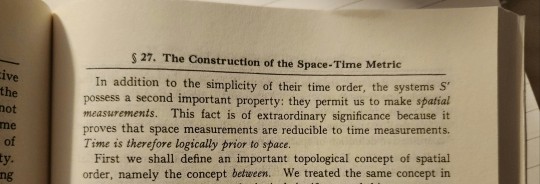
The Philosophy of Space and Time by Hans Reichenbach
#reichenbach#hans reichenbach#philosophy#philosophy of science#philosophy of physics#philosophy of mathematics
9 notes
·
View notes
Photo

Gaston Bachelard, June 27, 1884 / 2023
(image: Gaston Bachelard in his study, 1961. Photo: © Bernard Pascucci/INA/Getty)
#philosophy#philosophy of science#epistemology#history of philosophy#history of science#photography#gaston bachelard#birthday anniversary#bernard pascucci#1880s#1960s#2020s
68 notes
·
View notes
Text




1/100 days of productivity | 15/10/2023
Back in 2016 I did this challenge and I loved it! I started my masters a few weeks ago and thoughts this was the perfect challenge to ensure it went well!
To do list
Vaccum
Mop the floors
Change sheets
3 chapters of Against Method
Questionnaire - Philosophy of scientific knowledge
Write essay - Historiography
Reading - Scientific Revolution
Final essay research - Historiography
#university#studyblr#chaotic academic aesthetic#dark academia#philosophy#philosophy of science#chaotic academia#history#academia#100 days of productivity#100 days challenge#100 days of studying#productivity challenge
29 notes
·
View notes